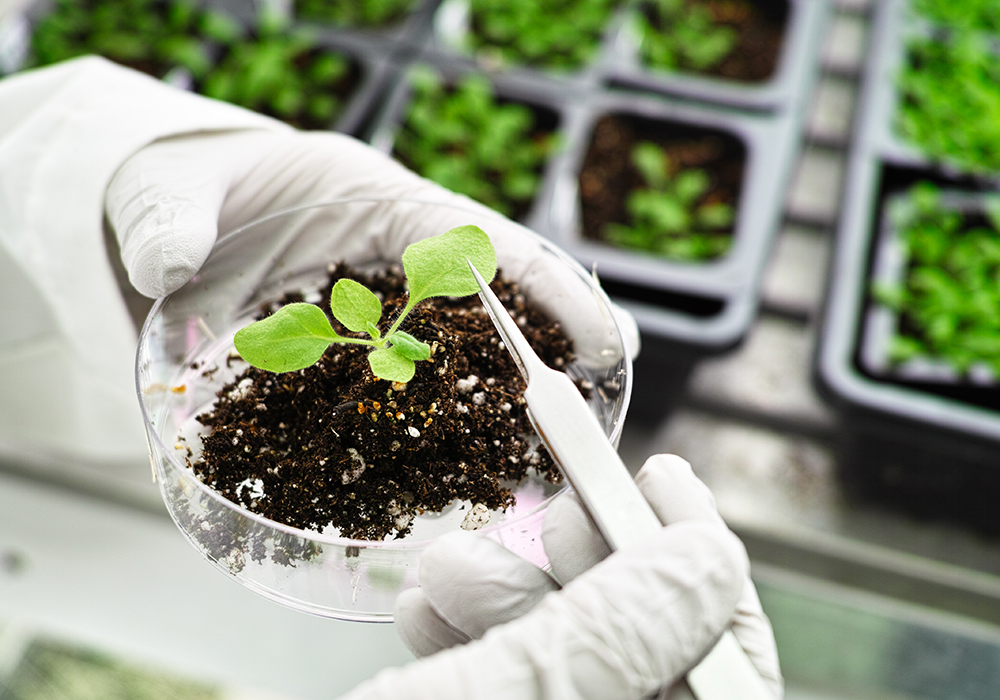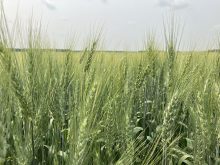Scientists at the University of California, Riverside, have for the first time, synthesized strigolactones from microbes.
This group of hormones controls shoot branching, leaf growth, and senescence and helps plant roots form relationships with micro-organisms and fungi to absorb soil nutrients. Strigolactones have been considered as potential useful agents to improve nutrient uptake and control weeds.
However, they come with a dark side. The hormone group can trigger the germination of parasitic plants like witchweed and broomrape, which can cause entire crops to fail.
In addition, they have been challenging to study and are expensive to develop at any commercial level.
Read Also

Equipment manufacturing may return to Canada
Some ag equipment and automotive manufacturers are now adjusting their production and distribution to avoid tariff costs in relation to supplying the Canadian market.
But according to Yanran Li, assistant professor of chemical and environmental engineering at UC Riverside, the work to synthesize strigolactones from microbes has laid the groundwork for developing a microbial production process.
She said that while certain structures of the hormone in one plant can be a stimulant for weed germination, the hormone’s impact in another plant can strengthen resistance to weed infection.
“The key thing is to clearly identify the function of these molecules and uncover the structure and function correlation of SLs,” she said.
Researchers studying strigolactone hormones have previously used a chemical analogue, or substitute, called GR24. But now, with the establishment of an efficient microbial production platform, the process will be able to advance SL-related studies.
Developing the microbe-based process started with yeast and although engineered yeast is known to modify the strigolactone precursor called carlactone, the researchers could not synthesize it with any of the specific genes they used.
Li worked with co-corresponding author of the report, professor Kang Zhou, with the Department of Chemical and Biomolecular Engineering at the National University of Singapore. Their studies led to the use of a combination of baker’s yeast and nonpathogenic E. coli bacteria.
When the yeast and bacteria were cultured together in the same medium, the E. coli made carlactone, and the yeast transformed it into strigolactones. The method also produced enough strigolactones to extract and use in further scientific studies.
Using this approach, the research team identified the function of multiple strigolactone biosynthetic enzymes. They also engineered microbe metabolism to boost strigolactone production threefold.
Although commercial production of strigolactones is still a long way off, the new method for biosynthesizing the hormones from a yeast-bacterium mix will help scientists learn more about this group of plant hormones, especially the enzymes involved.
Enzymes are protein catalysts that are responsible for modification of carlactone by yeast. Because carlactone is unstable, it cannot be purchased from commercial sources. As a result, many plant scientists have difficulty studying new enzymes that may work to transform carlactone into strigolactones.
The knowledge is expected to lead to an agricultural application and Li stressed that any developing commercial compound would be valuable for a wide range of crops.
“SLs are mainly produced and secreted from roots, and regulate the interaction between plant and soil microbes, so (their application) can be simply through spray or irrigation,” said Li. “We could also develop either chemical or biochemical ways to deliver the molecules to specific locations in the plant, but that technology is not currently available.”
The next stage in the research is twofold.
“First, we need to optimize the production in the microbial consortium (of yeast and E. coli) and, two, we are starting to collaborate with our colleagues in SL fundamental investigations to decipher the synthesis of SLs in different plants and study the evolution and origin of this group of molecules.”
The research was recently published in Science Advances.















